Call it a support group for 66 fan bases.
The Houston Cougars and UCLA Bruins joined a less-than-exclusive list on Saturday night of teams whose 2021 NCAA tournament experiences have ended with a loss. Either the Gonzaga Bulldogs or Baylor Bears will join them after Monday night's national championship, and for whichever team that is, it's going to hurt.
Every team's exit from the tournament has its own distinctive story, but some are undoubtedly tougher to swallow than others, so we sought to quantify the disappointment. Here are the main factors we considered in measuring the March Madness pain:
Did your team squander a game it looked like it had won? ESPN's win probability data helped determine the appropriate level of devastation here.
Did your team squander a golden opportunity against a perceived lesser opponent?
Did your team come up short in a bid to make some kind of history? First NCAA win/Sweet 16/Final Four in a long time is what we were seeking here.
Was it the end of an era? Did your team have a group of seniors known to be departing? A coach on the move or headed toward retirement?
Why would you want to relive this? You wouldn't, but if you're a believer in the time-tested adage that misery loves company, you'll find some solace in looking at our list and seeing that someone probably feels worse than you. (Even you, UCLA fans). Now to the list...

66. Mount St. Mary's Mountaineers (No. 16 seed, East)
How they lost: Fellow No. 16 seed Texas Southern defeated the Mountaineers 60-52 in the First Four
Peak win probability: 85.4% (Mount St. Mary's 30, Texas Southern 20, 20:00 mark of second half)
How much it hurt: The Mount was certainly seeking a win in the NCAA tournament's first game in two years and surely had to be feeling good about its chances at the break. But the field's weakest team (KenPom rank: 236) could not have been floored by the loss, plus there was a silver lining for Dan Engelstad's squad: The Mountaineers featured no seniors and will be a contender to rep the NEC at the NCAA tournament stage next season.

65. Norfolk State Spartans (No. 16 seed, West)
How they lost: No. 1 seed Gonzaga defeated the Spartans 98-55 in the first round
Peak win probability: 2.9% (Norfolk State 9, Gonzaga 6, 15:53 mark of first half)
How much it hurt: Had you laid out a best-case scenario for NSU on Selection Sunday, this was it: win a game in the First Four (and the lucrative NCAA financial unit that comes with advancing) and get a chance to share a bill with a possibly historic Gonzaga team for a couple of hours in the first round. The Spartans' six seniors got to go out as close to the top as this version of MEAC champs could plausibly hope for.

64. Drexel Dragons (No. 16, Midwest)
How they lost: No. 1 seed Illinois defeated the Dragons 78-49 in the first round
Peak win probability: 7.2% (Drexel 5, Illinois 2, 16:17 mark of first half)
How much it hurt: Drexel would have been more than happy to stick around longer in its first NCAA tournament appearance since 1996, but getting here was a perfectly acceptable accomplishment for a team that finished sixth in the CAA race. Top Dragon Camren Wynter is slated to return next season and will have a fighting shot to get back here.

63. Hartford Hawks (No. 16 seed, South)
How they lost: No. 1 seed Baylor defeated the Hawks 79-55 in the first round
Peak win probability: 61.1% (Hartford 10, Baylor 6, 13:19 mark of first half)
How much it hurt: This was Hartford's first NCAA tournament appearance in its Division I history, and though its league did produce the only 16-over-1 upset in men's March Madness history, expectations were low that the America East's fourth-place finisher had true upset potential here. When starting guard D.J. Mitchell was lost to an ankle injury on the game's first shot, that potential was reduced further. Hawks coach John Gallagher did seem to enjoy what was effectively a weeklong commercial for his program -- the only disappointment was that it had to end. "What can I say? Everything happens for a reason, it's the Feast of St. Joseph's, it wasn't our day," Gallagher said afterward.

62. Texas Southern Tigers (No. 16 seed, East)
How they lost: No. 1 seed Michigan defeated the Tigers 82-66 in the first round
Peak win probability: 2.5% (Michigan 0, Texas Southern 0 at 20:00 mark of first half)
How much it hurt: Texas Southern's defeat was ultimately the least lopsided of the 1 vs. 16 matchups, but it was never particularly close -- Michigan scored the first seven points and led by double digits from 31-20 onward. Still, good NCAA tournament memories should abound for TSU, which came back from a 10-point halftime deficit to beat Mount St. Mary's in the First Four and watched Michael Weathers drop a game-high 24 points on the Wolverines.

61. Cleveland State Vikings (No. 15 seed, Midwest)
How they lost: No. 2 seed Houston defeated the Vikings 87-56 in the first round
Peak win probability: 6.1% (Houston 27, Cleveland State 24 at 3:11 mark of first half)
How much it hurt: After losing 20-plus games in each of the past five seasons, CSU pulled off one of the great Lazarus acts in the country by winning the Horizon regular-season title and subsequently navigating the conference tournament. Dennis Gates' squad couldn't keep it rolling in the school's first NCAA appearance since 2009 -- a 27-6 run after halftime wiped the Vikings out -- but the banners that will hang from the Wolstein Center rafters will be a decent consolation prize.

60. Drake Bulldogs (No. 11 seed, West)
How they lost: No. 6 seed USC defeated the Bulldogs 72-56 in the first round
Peak win probability: 45.8% (Drake 26, USC 23, 8:09 mark of first half)
How much it hurt: There ought to have been no shame carried home on the Bulldogs' flight from Indianapolis to Des Moines. Darian DeVries' team overcame critical late-season injuries just to keep their heads above the waves and make the field of 68, and once they were there delivered the school its first NCAA tournament win since 1971 over Wichita State in the First Four. Losing to a USC team with lottery pick Evan Mobley, a squad that would ultimately reach the Elite Eight, hardly diminishes those accomplishments.

59, Morehead State Eagles (No. 14 seed, Midwest)
How they lost: No. 3 seed West Virginia defeated the Eagles 84-67 in the first round
Peak win probability: 26.0% (West Virginia 46, Morehead State 45, 13:59 mark of second half)
How much it hurt: Morehead State fell behind by double digits early in the proceedings but refused to go quietly, making a couple of big runs to make WVU sweat well into the second half. But an 11-0 Mountaineers flurry near the 10-minute mark effectively ended the dream for Preston Spradlin's group, which has most of its core scheduled to return next season and will have a chance to get back here.
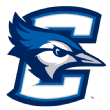
58. Creighton Bluejays (No. 5 seed, West)
How they lost: No. 1 seed Gonzaga defeated the Bluejays 83-65 in the Sweet 16
Peak win probability: 20.7% (Creighton 0, Gonzaga 0, 20:00 mark of first half)
How much it hurt: If you were a Creighton fan with a strong foundation in reality, the Bluejays' run to the Sweet 16 was probably something akin to your best-case scenario once you saw the bracket. Wins over UC Santa Barbara and Ohio delivered the school to the Sweet 16 for the first time in school history, where Gonzaga did the expected and more or less handled Greg McDermott's team. Creighton hung for the first 10 minutes -- a Marcus Zegarowski 3 cut its deficit to 27-25 at one point -- but the Zags were up 10 by halftime and led by double digits for the entire second half (and led by as many as 27 points). A fine run to the second weekend, even if it was something less than a magical one.

57. Oklahoma Sooners (No. 8 seed, West)
How they lost: No. 1 seed Gonzaga defeated the Sooners 87-71 in the second round
Peak win probability: 30.9% (Oklahoma 12, Gonzaga 4, 17:39 mark of first half)
How much it hurt: It was the end of an era for the Sooners, though we didn't know at the time. Days after falling to the Zags, Lon Kruger announced his retirement, bringing the curtain down on an OU career that saw him lead the program to the NCAA tournament seven times in 10 seasons, including a Final Four appearance in 2016. Kruger's final run would fall short of that benchmark, though this ending was not at all unexpected against the top-ranked, undefeated Zags. OU actually hung in there longer than many expected -- it was still a one-possession game as the clock ticked under the 5-minute mark of the first half, and the Sooners whittled a 19-point deficit down to 9 with 2:38 to play, but Gonzaga never looked to be in any serious danger.

56. Clemson Tigers (No. 7 seed, Midwest)
How they lost: No. 10 seed Rutgers defeated the Tigers 60-56 in the first round
Peak win probability: 68.7% (Clemson 28, Rutgers 23, 19:51 mark of second half)
How much it hurt: The seed lines said the Tigers were supposed to win a game in this tournament, though Clemson fans witnessing what was just the school's second NCAA appearance in 10 years were taking nothing for granted. This was a nip-and-tuck affair throughout, but the final minutes are going to remain tough to swallow for the Tigers. After tying the score at 55-55 on a Clyde Trapp three-point play with 4:12 left, Clemson scored but a single point, missing its final four shots and committing a pair of turnovers, including a questionable traveling call on Aamir Simms in the final minute. It was likely the final game at Clemson for Trapp (who subsequently entered the NBA draft process and the transfer portal) and Simms (expected to depart after testing the NBA draft process last offseason).

55. Tennessee Volunteers (No. 5 seed, South)
How they lost: No. 12 seed Oregon State defeated the Volunteers 70-56 in the first round
Peak win probability: 84.3% (Tennessee 0, Oregon State 0, 20:00 mark of first half)
How much it hurt: The Vols looked shaky coming into the tournament, with an 8-8 record over their last 16 games and a facial fracture and concussion sidelining senior leader John Fulkerson. Two of the team's biggest issues -- shooting the 3 and rebounding -- were culprits in the first-round exit courtesy of OSU. The Vols shot 5-of-26 (19.2%) from beyond the arc and were outrebounded 41-34 in a game that was never within single digits over the final 26:33. "That was the problem with our team, if you look at our team all year, it was the inconsistency, not really knowing from game to game what we were going to get," Tennessee coach Rick Barnes said afterward.

54. Georgetown Hoyas (No. 12 seed, East)
How they lost: No. 5 seed Colorado defeated the Hoyas 96-73 in the first round
Peak win probability: 33.2% (Georgetown 2, Colorado 0, 19:04 mark of first half)
How much it hurt: Georgetown and Oregon State had similar profiles as bid-stealers and 12-seeds, but wow, did the Hoyas and Beavers have different 2021 NCAA tournament experiences. A Georgetown team that was 10-4 and the toughest out in the Big East over the season's final six weeks suddenly morphed back into the last-place pick that started 3-8. Colorado ended the first half on a 40-16 run and led by 24 at the break, and the Hoyas never trailed by fewer than 18 in the second half. CU shot a blistering 16-for-25 (64%) from beyond the 3-point line and ran Patrick Ewing's group out of the gym. File this one under "embarrassing" painful rather than "missed a golden opportunity" painful.

53. Wisconsin Badgers (No. 9 seed, South)
How they lost: No. 1 seed Baylor defeated the Badgers 76-63 in the second round
Peak win probability: 40.7% (Wisconsin 7, Baylor 2, 16:48 mark of first half)
How much it hurt: You never know with a senior-dominated team in March, though with Wisconsin, you kind of knew. Their thorough first-round win over North Carolina (the final game of Roy Williams' career, as it would turn out) notwithstanding, the Badgers had gone 3-6 over their previous nine games entering the second round and it was hard to imagine them putting a serious scare into Baylor. Wisconsin put together a run to turn an 18-point second-half deficit to a 56-49 game with 9:26 to play but would get no closer or leave much suspense for their supporters. Whether this will mark the end for several Badgers seniors should become clear in the coming weeks, though center Nate Reuvers and Trevor Anderson have already entered the transfer portal.

52. Liberty Flames (No. 13 seed, Midwest)
How they lost: No. 4 seed Oklahoma State defeated the Flames 69-60 in the first round
Peak win probability: 64.4% (Liberty 30, Oklahoma State 24, 0:54 mark of first half)
How much it hurt: The Flames' first-round takedown of Mississippi State in the 2019 tournament meant there were some real expectations here, and when Liberty entered halftime with the lead over Cade Cunningham & Co., it appeared those expectations were well-founded. The Flames were still within 60-56 at the 2:48 mark but couldn't do enough to contain Cunningham, who scored nine of his 15 points in the final three minutes, including a dagger 3 to push the margin to 65-56 at 1:43. The near miss for Liberty is eased by the reality that top players Darius McGhee and Blake Preston are scheduled to return next season for the ASUN tourney champs.

51. North Texas Mean Green (No. 13 seed, South)
How they lost: No. 5 seed Villanova defeated the Mean Green 84-61 in the second round
Peak win probability: 47.7% (North Texas 21, Villanova 13, 11:32 mark of first half)
How much it hurt: It was going to be tough to top UNT's first-round ouster of Purdue -- the first NCAA tournament win in school history -- and the Mean Green ultimately didn't top it, or come particularly close. After Javion Hamlet's jumper put North Texas up by 8 in the first half, the Wildcats blew the doors off the building with a 34-6 run that left little doubt. "We came here and made it to the second round," Hamlet said. "That's not something I came here to do. I came to win it all. [But] I have nothing to be mad about."

50. Utah State Aggies (No. 11 seed, South)
How they lost: No. 6 seed Texas Tech defeated the Aggies 65-53 in the first round
Peak win probability: 62.4% (Utah State 31, Texas Tech 25, 16:34 mark of second half)
How much it hurt: Utah State spent the better part of the final month of the regular season on the NCAA tournament bubble, and looked fairly intent on justifying its selection until a 13-0 Texas Tech run turned a 31-25 Aggies lead into a 38-31 deficit from which USU would never recover. Not understood fully at the time the game went final, this would also have some "end of an era" style pain: Star junior center Neemias Queta would declare for the NBA draft in the days after the defeat, and head coach Craig Smith would exit to take the same role at the University of Utah.

49. Abilene Christian Wildcats (No. 14 seed, East)
How they lost: No. 11 seed UCLA defeated the Wildcats 67-47 in the second round
Peak win probability: 50.3% (Abilene Christian 12, UCLA 8, 14:34 mark of first half)
How much it hurt: The Wildcats' earth-shaking upset of Texas in the first round will be remembered for generations. The way ACU was eliminated ... less so. An 18-0 UCLA first-half run turned a 12-8 Wildcats lead into a 26-12 deficit, and that was essentially it for the Southland champs' Cinderella run. "I love our dudes," ACU coach Joe Golding said afterward. "They had a heck of a game the other night, and we just couldn't find it tonight."

48. Grand Canyon Antelopes (No. 15 seed, West)
How they lost: No. 2 seed Iowa defeated the Antelopes 86-74 in the first round
Peak win probability: 11.6% (Iowa 29, Grand Canyon 24 at 5:07 mark of first half)
How much it hurt: The Antelopes were also NCAA tournament first-timers, but there was some genuine pregame upset hope here from a team that had hung with Colorado and Arizona State back in December and had March Madness icon Bryce Drew patrolling the sideline. But the Lopes fell behind by 11 at halftime, and the WAC champs never got within single digits thereafter while struggling to contain Luka Garza (24 points).

47. Winthrop Eagles (No. 12 seed, South)
How they lost: No. 5 seed Villanova defeated the Eagles 76-63 in the first round
Peak win probability: 37.3% (Winthrop 33, Villanova 31, 0:55 mark of first half)
How much it hurt: There wasn't an article or segment on potential first-round upsets, from Sunday's bracket reveal 'til Friday's first-round tipoff, that didn't list 23-1 Winthrop over injury-depleted Villanova as a prime candidate. You got the feeling watching this game that Jay Wright's team was well aware of that chatter. Villanova controlled the second-half pace and for the most part kept Winthrop at arm's length, holding the Eagles to 28% shooting in the second half. The Eagles were not the better team here, but it did bring a bittersweet conclusion to an era, as senior Chandler Vaudrin likely played his last game and coach Pat Kelsey would days later accept the head-coaching job at Charleston.

46. Colgate Raiders (No. 14 seed, South)
How they lost: No. 3 seed Arkansas defeated the Raiders 85-68 in the first round
Peak win probability: 84.6% (Colgate 33, Arkansas 19, 4:17 mark of first half)
How much it hurt: Back before we knew recovering from double-digit deficits would become a habit for the Razorbacks, the Raiders appeared headed toward giant-killer territory. Then Arkansas closed the first half on a 17-0 run, and though the teams traded blows for a stretch in the second half, the outcome was not in a great deal of doubt over the final five minutes or so. If it was the last we saw of senior Jordan Burns (16.8 points per game) in a Colgate uniform, the pain will retroactively become heightened a bit for Matt Langel's Patriot League champs.

45. St. Bonaventure Bonnies (No. 9 seed, East)
How they lost: No. 8 seed LSU defeated the Bonnies 76-61 in the first round
Peak win probability: 57.1% (St. Bonaventure 4, LSU 2, 13:39 mark of first half)
How much it hurt: Armed with the first single-digit seed in their history, the Atlantic 10 champs had reasonable hopes to win a game and make what would have been their deepest run since Bob Lanier powered the Bonnies to the 1970 Final Four. But SBU -- which had played only Akron and Hofstra outside the conference -- entered this event as something of a mystery team, and so the Bonnies' failure to launch against a mega-talented LSU group wasn't an overwhelming surprise. The offense just wasn't there for a team that shot 33.3% for the game, including 3-of-20 (15%) from 3, and Bona was also manhandled on the boards by the Tigers (49-30). Mark Schmidt's team trailed by double digits for most of the second half and never got closer than nine points. Bonnies guard Jaren Holmes (18 points) was positive afterward, however. "This is something that I'll be able to tell my children, talk about forever, honestly," Holmes said. "This is a magical experience."

44. BYU Cougars (No. 6 seed, East)
How they lost: No. 11 seed UCLA defeated the Cougars 73-62 in the first round
Peak win probability: 61.8% (BYU 0, UCLA 0, 19:52 mark of first half)
How much it hurt: Although bracket advisers warned that the Cougars were vulnerable to a first-round upset, BYU had turned some heads very recently by taking Gonzaga down to the wire in the WCC tournament and had an interesting profile as a senior-dominated group. But the Bruins -- who turned out to be just a touch better than their 11-seed indicated -- led wire to wire to deny BYU its first NCAA tournament win since 2012. A rough night from 3 (3-of-17, 17.6%) will hold up as a confounding element of the loss for a team that led the WCC in 3-point percentage (39.8) in conference games.

43. Iona Gaels (No. 15 seed, East)
How they lost: No. 2 seed Alabama defeated the Gaels 68-55 in the first round
Peak win probability: 42.5% (Iona 42, Alabama 40 at the 11:51 mark of the second half)
How much it hurt: Remote controls switched in unison to TBS after Asante Gist made a layup to get Iona to within 47-46 with nine minutes and change to play -- but that was precisely the moment when Alabama woke up. Rick Pitino's Gaels fell victim to an 11-0 run that effectively salted the contest away. Still, impartial observers were left to applaud a great late-season run by a team hit with multiple COVID-related pauses, plus a valiant NCAA tournament effort. "I'm really proud of them," Pitino said of his team. "Unfortunately, we didn't have enough weapons to beat Alabama."

42. LSU Tigers (No. 8 seed, East)
How they lost: No. 1 seed Michigan defeated the Tigers 86-78 in the second round
Peak win probability: 71.3% (LSU 51, Michigan 45, 15:50 mark of second half)
How much it hurt: It's the talented underachievers that give bracket-fillers headaches in every tournament, and this LSU team full of NBA prospects presented just such a case -- while giving Tigers fans substantial hope. And LSU certainly looked capable of toppling a No. 1 seed for most of this one, but a 14-1 Wolverines run that turned a 63-58 Tigers lead into a 72-64 Michigan advantage near the 6-minute mark was the key sequence -- Will Wade's squad would never get closer than six points thereafter. The loss denied Wade his first Sweet 16 appearance (though LSU got there without him when Wade was serving an FBI probe-related suspension in 2019). It was also likely the last college game for talented freshman Cameron Thomas (30 points vs. Michigan), who has a chance to be an NBA lottery pick on July 29.

41. Oregon Ducks (No. 7 seed, West)
How they lost: No. 6 seed USC defeated the Ducks 82-68 in the Sweet 16
Peak win probability: 50.4% (Oregon 7, USC 3, 16:04 mark of first half)
How much it hurt: Oregon entered the 2020-21 season harboring realistic Final Four hopes, and though the Ducks never quite delivered on that promise, they did enter the Sweet 16 having gone 12-2 in their last 14 games. They also had proven tournament coach Dana Altman on the sideline, and a familiarity with opponent USC -- which had beaten them 72-58 in L.A. on Feb. 22 -- so it was hardly outlandish to think the Ducks could survive and advance here. This game was even for the first 12 minutes or so before a 12-0 USC run pushed a 21-19 lead to 33-19, and Altman & Co. would never seriously threaten thereafter, trailing by as many as 21 in the second half. USC shot the ball too well (57.4%, including 10-of-17 from 3) for Oregon to stick around.

40. Purdue Boilermakers (No. 4 seed, South)
How they lost: No. 13 seed North Texas defeated the Boilermakers 78-69 (OT) in the first round
Peak win probability: 81.3% (Purdue 3, North Texas 0, 19:37 mark of first half)
How much it hurt: Purdue has suffered its fair share of tournament heartbreak over the years, though this one was new in the sense that it was the biggest seed disparity in a Boilermakers loss (nine seed lines) in 69 NCAA tourney games during the seeded era. That the loss also occurred in in the Boilers' backyard, as the only Indiana representative in an all-in-Indiana tournament, ratchets up the historical significance. On the other hand, it's not as if Matt Painter's players had it stolen from them -- UNT led most of the way, even scoring the first 10 points of overtime, made 28 of 59 shots (47.5%) and committed just eight turnovers in 45 minutes. It ended sooner than Purdue hoped, but this was probably not going to be the team that took Boilermakers fans on a deep tournament run.

39. Virginia Cavaliers (No. 4 seed, West)
How they lost: No. 13 seed Ohio defeated the Cavaliers 62-58 in the first round
Peak win probability: 91.2% (Virginia 11, Ohio 5, 13:10 mark of first half)
How much it hurt: The feast-or-famine experience that is Virginia in the tournament continues, as the defending national champions were knocked out by a double-digit seed for the third time in their past five events. Are Cavs fans annoyed? Sure. Will the mention of the Bobcats cause a visceral reaction like the four letters "UMBC" will for time immemorial? Nah. The reality was that the Cavaliers didn't make enough shots (8-for-31 from 3, 25.8%) and that Ohio had the best player on the court in Jason Preston (11 points, 13 rebounds, 8 assists). Cavs senior Sam Hauser, in the running for second-best player on the court, shot just 4-of-16 from the floor in what he acknowledged afterward was his final collegiate game. And that's a tough one.

38. West Virginia Mountaineers (No. 3 seed, Midwest)
How they lost: No. 11 seed Syracuse defeated the Mountaineers 75-72 in the second round
Peak win probability: 63.4% (West Virginia 53, Syracuse 52, 9:16 mark of second half)
How much it hurt: Despite what the seed lines said, West Virginia had no illusions that this meeting of former Big East combatants was going to be easy -- and it wasn't. Syracuse made too many 3s (14 of its 31, including 10-of-21 combined by Buddy Boeheim and Joseph Girard III), West Virginia missed too many 2s (it shot 15-of-44 from inside the arc, 34.1%), denying WVU what would have been its sixth Sweet 16 appearance under Bob Huggins. But with just about everyone back next year, this is certain to be a team with high expectations for a deeper run in 2021-22.

37. Appalachian State Mountaineers (No. 16 seed, West)
How they lost: Fellow No. 16 seed Norfolk State defeated the Mountaineers 54-53 in the First Four
Peak win probability: 89.3% (Appalachian State 51, Norfolk State 45 at 5:23 mark of second half)
How much it hurt: ASU was playing with house money in a sense -- it caught fire in the Sun Belt tournament to reach the NCAA stage despite having gone just 7-8 in the nation's 21st-best conference. But there was some pain in failing to secure what would have been the first NCAA tournament win in school history, especially when it looked well within reach down the stretch. App State was down 19 in the first half, came all the way back to lead by 6 late, then got caught on the business end of a closing rally by NSU. Two ASU field goal attempts in the final five seconds were off the mark. "At some point, when we get through it, instead of being sad, we'll be glad it happened," coach Dustin Kerns said of the team's brief NCAA experience.
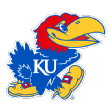
36. Kansas Jayhawks (No. 3 seed, West)
How they lost: No. 6 seed USC defeated the Jayhawks 85-51 in the second round
Peak win probability: 52.8% (Kansas 0, USC 0, 19:08 mark of first half)
How much it hurt: There's pain that comes with embarrassment, sure, and there's agony that comes with failing to deliver on the high standards a program such as Kansas has set for itself over its storied history. But this 34-point wire-to-wire blowout mostly just demonstrated that this particular Kansas team wasn't good enough to match the heights scaled by its best teams, and that has to make the pain feel a touch less acute than a one-point nail-biter might have done.
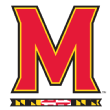
35. Maryland Terrapins (No. 10 seed, East)
How they lost: No. 2 seed Alabama defeated the Terrapins 96-77 in the second round
Peak win probability: 51.6% (Maryland 18, Alabama 12, 13:00 mark of first half)
How much it hurt: It's all a matter of perspective. The notion of a Maryland team that woke up on Valentine's Day at 10-10, with a 4-9 record in the Big Ten, winning a game in the 2021 NCAA tournament would have seemed a laughable concept to a great many people. The fact that a moderately talented Terps team achieved just such a thing out of a loaded Big Ten is one of the low-key solid achievements of Mark Turgeon's 10 seasons in College Park.
But running out of steam before the Sweet 16 has also become a familiar feeling for Terps fans, who can definitely tell you how many times Turgeon has reached the second weekend (1) vs. how many times Gary Williams got there (7) but probably have less recall for how many straight years Williams didn't get there over the final eight years of his tenure (8). So if there's pain, it's less about one result against an Alabama team that most people could see coming a mile away and more about the broader context for a program that is trying to live up to the specter of some very real banners hanging from the Xfinity Center rafters.

34. Syracuse Orange (No. 11 seed, Midwest)
How they lost: No. 2 seed Houston defeated the Orange 62-46 in the Sweet 16
Peak win probability: 32.8% (Syracuse 20, Houston 20, 3:30 mark of first half)
How much it hurt: Syracuse is built to win in March, and it did just that, with its four best wins of the season, per KenPom (North Carolina, Clemson, San Diego State, West Virginia), coming after the calendar had flipped to the third month. So, the Orange and their fans were definitely not content with a Sweet 16 exit, no matter what the seed line said. But objective observers also understood that a team that finished in the bottom half of the ACC in both 2- and 3-point percentage was going to have to make some shots to advance. Against Houston, it didn't. Syracuse made 14 field goals in the entire game, including two over the final 12:41. Those kinds of numbers suggest the Sweet 16 was this group's ceiling.

33. Florida State Seminoles (No. 4 seed, East)
How they lost: No. 1 seed Michigan defeated the Seminoles 76-58 in the Sweet 16
Peak win probability: 37.4% (Florida State 4, Michigan 2, 18:08 mark of first half)
How much it hurt: The Seminoles were an intriguing second-weekend team, scoring impressive wins over a scary UNC Greensboro squad in the first round and a very good Colorado group in the second. With a seemingly vulnerable 1-seed next on the docket in Michigan, the notion of 72-year-old Leonard Hamilton reaching the first Final Four of his illustrious career was beginning to gather momentum. But the Noles spent 40 minutes searching for something they could never quite locate. There was a brief glimmer early in the second half when Anthony Polite made a 3 to narrow the margin to 41-36, but a 7-0 Michigan run more or less permanently ended the threat. Michigan shot 26-of-48 (54.2%) from 2 to keep FSU on its toes. "Even though I thought we could have played a little better, I'm not sure Michigan didn't have a lot to do with our inability to play as well as we have sometimes," Hamilton said afterward.

32. San Diego State Aztecs (No. 6 seed, Midwest)
How they lost: No. 11 seed Syracuse defeated the Aztecs 78-62 in the first round
Peak win probability: 67.9% (San Diego State 15, Syracuse 10, 11:23 mark of first half)
How much it hurt: This Aztecs squad did not quite have the Final Four billing afforded last year's team, but SDSU entered this tournament with 14 straight wins, Mountain West regular-season and tournament titles, and very real hopes of making a serious run. Some incredible Syracuse shooting and the vaunted matchup zone decimated those hopes in fairly short order. A 22-3 Orange run ended the first half, and essentially the game. Syracuse shot a blistering 15-of-27 (55.6%) from 3 in the contest, while Brian Dutcher's group countered with a not-good-enough 11-of-40 (27.5%). It was a tough ending for an SDSU group with five seniors who played major minutes, though all will have the option of exercising their free year and returning next season.

31. Oklahoma State Cowboys (No. 4 seed, Midwest)
How they lost: No. 12 seed Oregon State defeated the Cowboys 80-70 in the second round
Peak win probability: 81.4% (Oklahoma State 9, Oregon State 4, 15:37 mark of first half)
How much it hurt: The Cowboys had to have stars in their eyes while facing a 12-seed just after watching No. 1 Midwest seed Illinois get taken out by Loyola Chicago earlier in the day. The bracket may have opened up for Cade Cunningham & Co., but they couldn't hold up their end of the deal despite a couple of furious rallies after trailing by as many as 18 in the first half. Down 70-67 with the ball as the clock ticked under 3:10 to play is the moment where Oklahoma State would probably like to stop the tape. From there, the Pokes would miss 10 straight shots (8 field goals, 2 free throws) before Cunningham made a free throw with 24 seconds left. By that point, it was over. In addition to likely being the final game for quite possibly the greatest player in school history, the pain could linger for a program still subject to a postseason ban that remains under appeal.

30. Colorado Buffaloes (No. 5 seed, East)
How they lost: No. 4 seed Florida State defeated the Buffaloes 71-53 in the second round
Peak win probability: 60.4% (Colorado 11, Florida State 9, 10:50 mark of first half)
How much it hurt: Anyone who might have been so bold as to predict the Pac-12's success in the 2021 NCAA tournament almost definitely would have had high hopes for Colorado, which owned wins over USC (twice), UCLA and Oregon State since Feb. 20. The Buffs also smoked a previously hot Georgetown team in the first round -- things looked good, until they didn't. Against FSU, Tad Boyle's team didn't shoot it well (35.7%), defend well (the Seminoles made 62% of their 2s) or take care of the basketball well (19 turnovers), and a 12-2 run that pushed the lead from 47-41 to 59-43 was basically the final word on Colorado's season. It was a bitter end for a CU squad that had seven seniors and was seeking its first Sweet 16 trip since 1969.

29. Villanova Wildcats (No. 5 seed, South)
How they lost: No. 1 seed Baylor defeated the Wildcats 62-51 in the Sweet 16
Peak win probability: 70.5% (Villanova 37, Baylor 31, 14:42 mark of second half)
How much it hurt: The college basketball universe was well aware of the way Villanova was taking on water entering the 2021 NCAA tournament, with the season-ending injury to Collin Gillespie and an early exit in the Big East tournament casting doubt on the Cats' staying power. But Jay Wright's squad survived upstarts Winthrop and North Texas, and a strong first half against top-seeded Baylor gave some definition to those Final Four dreams. But after Justin Moore made a layup to put VU ahead 41-39 with 11:31 to play, the Wildcats just stopped scoring -- they were outscored 23-10 the rest of the way. It sure would have been interesting to know what this game would have looked like if Gillespie had been on the court, but it was not to be. "We were good enough to beat them, but they just played better down the stretch," Wright said of the loss.

28. Arkansas Razorbacks (No. 3 seed, South)
How they lost: No. 1 seed Baylor defeated the Razorbacks 81-72 in the Elite Eight
Peak win probability: 26.3% (Baylor 64, Arkansas 60, 7:19 mark of second half)
How much it hurt: It was an undeniably exciting March for a long-suffering Arkansas fan base that hadn't seen the second weekend since 1996 or the Elite Eight since 1995. Eric Musselman has made the Razorbacks nationally relevant again, and this team's rallies from double-digit deficits in all three of its NCAA wins will not be soon forgotten. The regret comes in the rally against Baylor that the 2021 group couldn't quite complete -- a 10-2 second-half run that knocked the deficit from 62-50 to 64-60 offered real hope for a moment -- and the Razorbacks' nine straight missed field goals that followed their comeback were too much to withstand against a team like Baylor.

27. Wichita State Shockers (No. 11 seed, West)
How they lost: Fellow No. 11 seed Drake defeated the Shockers 53-52 in the First Four
Peak win probability: 92.4% (Wichita State 37, Drake 25, 11:22 mark of second half)
How much it hurt: Wichita State came close in its efforts to deliver coach Isaac Brown his first NCAA tournament win on the Shockers sideline but allowed Drake to catch fire at the wrong time. The Bulldogs scored points on seven straight trips to take the lead after falling behind by 12 in the second half, and Wichita scratched and clawed to give itself a chance at the end, but Alterique Gilbert's 3-point attempt at the buzzer fell short. Among the nagging oddities in a game that saw the Shockers blow two separate 12-point leads was the fact that top scorer and AAC co-Player of the Year Tyson Etienne (16.3 PPG) was held to a single point.

26. UConn Huskies (No. 7 seed, East)
How they lost: No. 10 seed Maryland defeated the Huskies 63-54 in the first round
Peak win probability: 71.3% (UConn 3, Maryland 0, 18:55 mark of first half)
How much it hurt: UConn fans understood that their first NCAA tournament entry since 2016 had some flaws, but they had not ruled out another storied run for a program that has a history of them. The Huskies men's most recent magical march, in 2014, had come from the No. 7 seed line. This group also had one of the tournament's best players in James Bouknight, but it would have to start by picking up some momentum against an underwhelming Maryland team. It never happened.
A 10-0 Maryland run in the first half turned a 19-18 Huskies lead to a 28-19 deficit, and the Terps kept Dan Hurley's team at arm's length the rest of the way. UConn shot the ball poorly in all three phases (32.3% from the floor, 30.4% from 3, 41.7% from the line), undermining its attempts at a rally. Bouknight scored 15 points in what will be his lone NCAA tournament game (he entered the 2021 NBA draft last week, as expected), the finality of which worsens the sting quite a bit.

25. Missouri Tigers (No. 9 seed, West)
How they lost: No. 8 seed Oklahoma defeated the Tigers 72-68 in the first round
Peak win probability: 64.4% (Missouri 14, Oklahoma 7, 14:57 mark of first half)
How much it hurt: Mizzou fans who dream of the first Final Four appearance in school history probably weren't deluding themselves into thinking this up-and-down team could accomplish that, but the program's first NCAA tournament victory since 2010? Sure, that was a reasonable expectation. And this was a close game basically the entire way -- no team ever led by double digits -- but Mizzou was unable to get a game-tying shot attempt down 70-67 in the closing seconds after Lon Kruger elected to foul Drew Buggs before the Tigers could attempt a 3. That stung, as did coach Cuonzo Martin's second-guessed decision to bench second-leading scorer Xavier Pinson in favor of Buggs (3 points, 1 assist in 22 minutes), one of five seniors on this roster.
"We got back in the game with Buggs, and it just went from there," Martin said of the decision afterward. "I thought Buggs did a great job on both sides of the basketball." Pinson subsequently entered his name in the transfer portal, perhaps signaling what could be a long offseason in Columbia.

24. Michigan State Spartans (No. 11 seed, East)
How they lost: Fellow No. 11 seed UCLA defeated the Spartans 86-80 (OT) in the First Four
Peak win probability: 87.8% (Michigan State 44, UCLA 31, 0:23 mark of first half)
How much it hurt: It might be tempting to think MSU had low expectations for this tournament, given its First Four status, but the Spartans were a good team over at least the final month of the regular season and had to believe they could make a run. The fact that UCLA won this game, and made just such a run, has to amp up the retrospective disappointment for Sparty. MSU was up 77-74 with the ball as the clock ticked under one minute to go in regulation, and not much went right after that for Tom Izzo's group. Turnovers, missed shots, a couple of bad fouls and ultimately a bitter epitaph for an uneven season in East Lansing.

23. Ohio Bobcats (No. 13 seed, West)
How they lost: No. 5 seed Creighton defeated the Bobcats 72-58 in the second round
Peak win probability: 33.7% (Ohio 11, Creighton 6, 12:55 mark of first half)
How much it hurt: Even with a memorable first-round takedown of Virginia to take home from their NCAA tournament experience, there will be some residual disappointment for a Bobcats squad that looked like a serious second-weekend Cinderella candidate after what it did to the Cavs. It just never quite materialized -- the Bobcats didn't shoot it well enough against Creighton (31.8% from the floor, including 23.3% from 3) and star Jason Preston (4 points on 1-of-10 shooting) never got comfortable for an Ohio team that never reached closer than nine points after halftime.

22. Eastern Washington Eagles (No. 14 seed, West)
How they lost: No. 3 seed Kansas defeated the Eagles 93-84 in the first round
Peak win probability: 68.3% (Eastern Washington 50, Kansas 40, 18:31 mark of second half)
How much it hurt: This looked like a legitimate upset possibility -- EWU jumped out to a 9-0 lead, led by eight points at the break and still had the lead as the clock ticked under 10 minutes to play. But the Big Sky champs had major trouble stopping KU's David McCormack when it mattered -- he scored 12 of his 22 points over the final nine minutes -- ultimately denying the Eagles what would have been the first NCAA tournament win in school history.

21. UNC Greensboro Spartans (No. 13 seed, East)
How they lost: No. 4 seed Florida State defeated the Spartans 64-54 in the second round
Peak win probability: 36.5% (Florida State 51, UNCG 50, 4:52 mark of second half)
How much it hurt: UNCG was a popular first-round upset pick, and though Florida State always looked to be in relative control, there was a glimmer right around the five-minute mark when it seemed as if it just might happen for Wes Miller's crew. But the Spartans picked the wrong time to go stone-cold, a 3-minute, 41-second stretch when they missed all three of their field goal attempts and both of their free throws to fall behind 57-50. By the time they scored again, at the 1:01 mark, it was a bit too late. A couple of critical missed free throws by senior star and team leader Isaiah Miller are likely to leave a bitter aftertaste for a while -- especially for Miller.

20. USC Trojans (No. 6 seed, West)
How they lost: No. 1 seed Gonzaga defeated the Trojans 85-66 in the Elite Eight
Peak win probability: 20.6% (USC 0, Gonzaga 0, 20:00 mark of first half)
How much it hurt: The Trojans had a nice run to their first Elite Eight since 2001, and they got there with immense style thanks in large part to the play of brothers Evan Mobley and Isaiah Mobley. Getting handled by Gonzaga is ultimately something that the world expects to happen to six teams in this tournament, so no heads should be hung over that fact. The real pain for USC and its supporters was in watching hated UCLA -- an inferior team to the Trojans by any reasonable standard in 2020-21 -- still standing in the Final Four while Andy Enfield's team returned to the Coast. The bracket breaks can be cruel.

19. Virginia Tech Hokies (No. 10 seed, South)
How they lost: No. 7 seed Florida defeated the Hokies 75-70 (OT) in the first round
Peak win probability: 83.0% (Virginia Tech 44, Florida 36, 14:53 mark of second half)
How much it hurt: An overtime loss and quick exit in what was the first game of the 2021 NCAA tournament's round of 64 had to be hard to swallow for the Hokies and their fans -- though the contest did have its thrilling moments. Sophomore guard Nahiem Alleyne had the performance of his life (28 points) to keep Tech in it, burying a 3-pointer with 1.6 seconds to play in regulation to force overtime. Alleyne scored Tech's final 12 points of regulation, but the Hokies weren't able to recover after top player Keve Aluma (7 points) fouled out in overtime, which helped deny the program its first NCAA tourney win of the Mike Young era. The fact that 15-seed Oral Roberts would defeat Florida to punch a ticket to the Sweet 16 likely adds a touch of retroactive pain for the Hokies.

18. Texas Tech Red Raiders (No. 6 seed, South)
How they lost: No. 3 seed Arkansas defeated the Red Raiders 68-66 in the second round
Peak win probability: 79.2% (Texas Tech 23, Arkansas 13, 10:35 mark of first half)
How much it hurt: Texas Tech went up by 10 early in its quest to make the second weekend for the third straight time under Chris Beard, was dominated by Arkansas for the next 20 minutes to fall behind 56-43, then methodically chipped away to get within 67-66 on a pair of Terrence Shannon Jr. free throws at the 1:56 mark. Those would be the final points of the Beard era in Lubbock. A missed free throw by Mac McClung and missed shots by Shannon and Kyler Edwards would close the books on the comeback attempt in heartbreaking fashion. Texas Tech is slated to return most of its team to give it another shot in 2021-22, though Beard's exit to become the new Texas coach casts the roster construction in some doubt.

17. North Carolina Tar Heels (No. 8 seed, South)
How they lost: No. 9 seed Wisconsin defeated the Tar Heels 85-62 in the first round
Peak win probability: 47.5% (North Carolina 0, Wisconsin 0, 18:35 mark of first half)
How much it hurt: We knew it was the end of an era, but not quite in this way. North Carolina's blowout loss to Wisconsin ended Roy Williams' personal streak of first-round wins (he was 29-0 entering this one), but it wasn't until 13 days later, when Williams announced his retirement, that the true significance of this loss came into focus. What was a close game for the first 12 minutes or so got out of hand with a 20-6 Badgers run to end the first half, from which UNC never recovered. The Heels were down 16 at the half and never pulled closer than 12 over the final 20 minutes, with Wisconsin's hot outside shooting (13-of-27 from 3, 48.1%) too big of a problem for Williams & Co. to overcome.
The Hall of Fame coach offered words afterward that perhaps hinted at what was to come: "I started the season when I was 70 years old, and I feel like I'm 103 now," Williams said. "It has been a trying year ... 2020 and the first part of 2021, I haven't enjoyed that much."

16. Houston Cougars (No. 2 seed, Midwest)
How they lost: No. 1 seed Baylor defeated the Cougars 78-59 in the Final Four
Peak win probability: 57.4% (Houston 3, Baylor 0, 18:46 mark of first half)
How much it hurt: This was supposed to be the better of the two semifinals, but the Cougars fell behind quickly and got left far behind, trailing by 25 at the break and effectively removing any chance of a comeback against a team of Baylor's caliber. It was a disappointing end to an otherwise special run for the Cougars, who reached the Final Four for the first time since 1984 and delivered Kelvin Sampson back to the national semifinals for the first time since he got there with Oklahoma in 2002. With four seniors who play regular minutes plus a star junior in Quentin Grimes who could test the NBA draft waters, the construction of the Cougars' roster will be worth keeping an eye on during the offseason.

15. Florida Gators (No. 7 seed, South)
How they lost: No. 15 seed Oral Roberts defeated the Gators 81-78 in the second round
Peak win probability: 94.3% (Florida 54, Oral Roberts 43, 16:18 mark of second half)
How much it hurt: The second weekend was in the Gators' sights -- all they had to do was finish the job against a 15-seed, only one of which had ever reached the Sweet 16. The job went unfinished. Oral Roberts chipped away after falling behind by double digits with fewer than 10 minutes to play, and the Gators (20 turnovers) let them. The final 2:30, after UF had gone ahead 78-77 on a Noah Locke jumper, is going to haunt this group for a while. The Gators' possessions went turnover, missed 2, turnover, missed 3, missed 3, missed 3, end of game. A long offseason for Mike White has already begun -- top player Tre Mann is entering the NBA draft, and four players including three-year starter Locke have announced their intention to transfer. Call this loss an ugly and unsatisfying end of an era.

14. Loyola Chicago Ramblers (No. 8 seed, Midwest)
How they lost: No. 12 seed Oregon State defeated the Ramblers 65-58 in the Sweet 16
Peak win probability: 87.8% (Loyola Chicago 9, Oregon State 3, 12:43 mark of first half)
How much it hurt: The hardest part was supposed to be over for Porter Moser's group, which had extinguished top-seeded Illinois in comprehensive fashion days before and had become a very popular pick to represent the Midwest in the Final Four. Could the Ramblers beat second-seeded Houston? We never got to find out, as all the things that went right for the Ramblers on the first weekend suddenly went missing. Players not named Cameron Krutwig (14 points, 10 rebounds) made just 12 of 42 shots (28.6%) against Oregon State, which went ahead 18-16 on a pair of Ethan Thompson free throws at 4:22 of the first half and never trailed thereafter. Loyola got as close as 47-44 on a Aher Uguak layup with 3:31 to play but would get no closer, denying Sister Jean her second Final Four in four years. Moser's exit for the Oklahoma head coaching job draws the curtain on a historically successful era for Loyola Chicago hoops.

13. Ohio State Buckeyes (No. 2 seed, South)
How they lost: No. 15 seed Oral Roberts defeated the Buckeyes 75-72 (OT) in the first round
Peak win probability: 96.3% (Ohio State 23, Oral Roberts 15, 8:56 mark of first half)
How much it hurt: Viewers who tuned in for the terrific Big Ten tourney title game between Illinois and Ohio State, won by the Illini in overtime, would have been surprised to learn that both high-quality teams would be out before the NCAA tournament's second weekend. Oral Roberts' appearance in the tourney might have already been forgotten had OSU -- with a 64-60 lead and the ball as the clock ticked below 1:30 in regulation -- managed the end of the second half slightly better. Instead, those last 90 seconds consistent of a turnover, a missed free throw, two missed field goals and two fouls (yielding four made free throws by ORU) and then overtime. The Golden Eagles seized the momentum and won the game in the extra frame, with key missed free throws from the Buckeyes (9-of-18 from the stripe for the game) among the factors.
"This is obviously a really, really bitter end to a terrific season," Ohio State coach Chris Holtmann said afterward. "We'll own that and accept it, and we'll move forward."
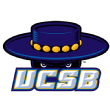
12. UC Santa Barbara Gauchos (No. 12 seed, West)
How they lost: No. 5 seed Creighton defeated the Gauchos 63-62 in the first round
Peak win probability: 82.7% (UCSB 58, Creighton 52, 4:55 mark of second half)
How much it hurt: Ouch. Many educated college basketball observers reasoned when the bracket was revealed that whatever the seed lines said, UCSB-Creighton was a fairly even matchup, and nothing that happened over the game's first 35 minutes dispelled that notion. In fact, UCSB had forced Creighton to play its half-court style and if the Gauchos had just made some shots and the Bluejays had missed a couple the rest of the way after building a 6-point lead in the closing minutes ... well, about that. Creighton went 4-for-6 from the floor and 2-for-3 from the line down the stretch. UCSB missed seven of its eight shots from the field over the final five minutes, including a lay-in at close range from Amadou Sow in the closing seconds. A genuine heartbreaker for a Gauchos team that would have gone on to play 13th-seeded Ohio had it held on.

11. Rutgers Scarlet Knights (No. 10 seed, Midwest)
How they lost: No. 2 seed Houston defeated the Scarlet Knights 63-60 in the second round
Peak win probability: 91.1% (Rutgers 56, Houston 47, 5:50 mark of second half)
How much it hurt: Maybe it seemed as if everything else should have been gravy after the Scarlet Knights defeated Clemson to log their first NCAA tournament win since 1991, but this is an event where true satisfaction is in short supply. In reality, Rutgers had Houston on the ropes, up nine as the clock ticked under 5 minutes, which is when the Cougars started making shots and the Scarlet Knights started missing them, and making other key mistakes. A pair of turnovers in the final 31 seconds, and a missed Ron Harper Jr. 3 that likely would have sent the game to overtime, are among the moments Steve Pikiell's team surely wishes it had back. Watching the Cougars continue to roll through the Midwest bracket, all the way to the Final Four, had to fertilize the seeds of regret for Rutgers.

10. Illinois Fighting Illini (No. 1 seed, Midwest)
How they lost: No. 8 seed Loyola Chicago defeated the Fighting Illini 71-58 in the second round
Peak win probability: 75.0 (Illinois 0, Loyola Chicago 0, 20:00 mark of first half)
How much it hurt: The Fighting Illini don't care that much about your busted bracket, but the top-seeded Big Ten tourney champs were definitely left to lament a squandered opportunity that just hasn't come all that often for Illinois historically. Wrote ESPN's John Gasaway, an Illinois alumnus: "The Fighting Illini operate with a regularity that can only be charted by Stonehenge. Every 16 years, it is said, the program produces a team that can contend for a national title. In 1989, it was the "Flying Illini," with Nick Anderson, Kendall Gill and Kenny Battle. That dream died at the Final Four courtesy of a Sean Higgins basket for Michigan. Then, in 2005, Dee Brown, Deron Williams and company came up just short against North Carolina in the national title game. Here we are again, 16 years after that." Not that losing in the round of 32 is ever going to be palatable for a 1-seed, but falling to an in-state foe like Loyola added a little bit of gasoline to the fire.

9. Oregon State Beavers (No. 12 seed, Midwest)
How they lost: No. 2 seed Houston defeated the Beavers 67-61 in the Elite Eight
Peak win probability: 44.3% (Oregon State 55, Houston 55, 3:29 mark of second half)
How much it hurt: Had this Elite Eight game remained on the trajectory that was charted when Houston took a commanding 34-17 lead into the halftime break, Oregon State's late-season march would have been remembered as a fun, unlikely run that ended in appropriate fashion at the hands of a far superior opponent. But man, it was right there for the Beavs.
When Gianni Hunt's late-shot-clock 3 banked in to tie the score at 55-55, a program-defining and historic trip as the Final Four's first-ever 12-seed suddenly looked plausible, which is why that final four-or-so minutes will remain tough to swallow for Oregon State and its fans. Houston made a big 3, hit most of its free throws and grabbed multiple critical offensive rebounds to salt it away, while Oregon State missed shots and committed key turnovers to extinguish its upset chances. "It was right there within our grasp with the effort we showed in the second half," OSU coach Wayne Tinkle acknowledged. "Really proud of this group. We got every single ounce out of them."

8. Oral Roberts Golden Eagles (No. 15 seed, South)
How they lost: No. 3 seed Arkansas defeated the Golden Eagles, 72-70, in the Sweet 16
Peak win probability: 79.1% (Oral Roberts 46, Arkansas 34, 15:21 mark of second half)
How much it hurt: Let the record reflect that Oral Roberts is the most successful No. 15 seed in NCAA tournament history, the first 15 to have a meaningful shot to reach the Elite Eight, and right up to the final buzzer. Its run is an undeniable, impressive achievement, but it's that final buzzer that is going to make it tough for ORU and its supporters to celebrate any time soon. The Golden Eagles had a pretty clean look from Max Abmas -- the nation's leading scorer -- that would have launched Oral Roberts to the Elite Eight and Abmas into NCAA tournament immortality. Alas, it was not to be.

7. Texas Longhorns (No. 3 seed, East)
How they lost: No. 14 seed Abilene Christian defeated the Longhorns, 53-52 in the first round
Peak win probability: 90.1% (Texas 32, Abilene Christian 23, 18:55 mark of second half)
How much it hurt: It wasn't just that the Longhorns failed to deliver, in the most gut-wrenching way possible, on what would have been their first NCAA tournament win of Shaka Smart's six seasons as head coach. It's that Texas was coming off a Big 12 conference tournament title and looked as if it had the goods to make a serious run -- the fact that No. 11 seed UCLA ended up in the Final Four from the Horns' quadrant of the bracket has to twist the knife. As it was, Texas fell to an in-state upstart and Smart exited stage left, amid increasing calls for his ouster, to a new job at Marquette.

6. Iowa Hawkeyes (No. 2 seed, West)
How they lost: No. 7 seed Oregon defeated the Hawkeyes, 95-80 in the second round
Peak win probability: 80.8% (Iowa 42, Oregon 38, 4:29 mark of first half)
How much it hurt: We'll let Iowa's senior star and probable Wooden Award winner Luka Garza tell it: "It's heartbreaking, so surreal, it kind of hit me all at once that this is the last time I'll put on this jersey, and that hurts a lot. I feel bad that I wasn't able to lead this team to where it needs to go." Though many Hawkeyes fans had understandably developed a "we'll believe it when we see it" mentality about the program's ability to reach the second weekend for the first time since 1999, Iowa's No. 2 seed matched its best placement in school history, and with Garza leading a group of veterans, there was an "if not now, when?" feeling about this team. Garza (36 points) was tremendous, but it was the Hawkeyes' famously hot-and-cold defense that factored prominently in Iowa's elimination -- Oregon shot 55.9% from the field in the game.

5. Alabama Crimson Tide (No. 2 seed, East)
How they lost: No. 11 seed UCLA defeated the Crimson Tide 88-78 (OT) in the Sweet 16
Peak win probability: 86.5% (Alabama 15, UCLA 7, 12:05 mark of first half)
How much it hurt: The official record will indicate that Alabama was a 2-seed, but history should remember that the SEC regular-season and tournament champs were playing like a 1-seed and were in fact a more popular pick to emerge from the East region than 1-seed Michigan. The Crimson Tide also had Final Four talent, and that's a not insignificant factor in the pain for a program and fan base that has never reached the Final Four in 22 appearances. Losing to an 11-seed, in a game that looked lost after Herbert Jones' missed free throws with 6 seconds remaining, and all of a sudden turned in Alabama's favor on Alex Reese's 3 to force overtime, only to then face a UCLA team that couldn't miss a shot and ended up with 23 points in the extra session, gives a sense of the emotional roller coaster here. That 11-of-25 performance from the free throw line from a Tide team that shot 70.8% from the stripe for the season, is going to sting for a while.

4. Georgia Tech Yellow Jackets (No. 9 seed, Midwest)
How they lost: No. 8 seed Loyola Chicago defeated the Yellow Jackets 71-60 in the first round
Peak win probability: 69.6% (Georgia Tech 23, Loyola Chicago 17, 4:15 mark of first half)
How much it hurt: What might have been. We'll never know how the Yellow Jackets might have fared had ACC Player of the Year Moses Wright not been sidelined by a positive COVID-19 test. Might it have been Josh Pastner's crew knocking off top-seeded Illinois in the second round and making a run in a wide-open Midwest region? The pain of not knowing will undoubtedly linger. As it was, the Jackets hung around most of the way, but Loyola's 30-17 advantage on the boards was a major difference, and was telling of life without 6-foot-9, 230-pound Wright (17.4 points, 8.0 rebounds per game) in the paint. "I feel so bad for him," Pastner said of Wright. "He worked so hard, a chance of lifetime to play in the NCAA tournament, and unfortunately he wasn't able to play. I feel sick for him."
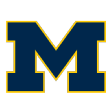
3. Michigan Wolverines (No. 1 seed, East)
How they lost: No. 11 seed UCLA defeated the Wolverines 51-49 in the Elite Eight
Peak win probability: 88.8% (Michigan 11, UCLA 4, 10:16 mark of first half)
How much it hurt: Yes, this one's going to leave a mark. Teams get to be a No. 1 seed with the chance to reach the Final Four if they beat a No. 11 seed only so often. And take nothing away from the Bruins, who had the perfect game plan to give themselves a chance and got a career game from Johnny Juzang (28 points on 11-of-19 shooting), but Michigan still probably lives to tell the tale if any of the three 3-pointers or the layup it attempted in the final 12 seconds finds the basket. The Wolverines missed all seven of their field goals after Chaundee Brown hit a 3 to tie the score at 46-46 with 5:23 to play -- and were still right there in the closing seconds. It was an uncharacteristic un-clutch performance by a typically clutch team at the exact wrong time. Michigan fans are not going to remember this tournament fondly, though the Big Ten title banner that gets hung in Crisler Center next season will perhaps ease the pain a touch.

2. UCLA Bruins (No. 11 seed, East)
How they lost: No. 1 seed Gonzaga defeated the Bruins 93-90 (OT) in the Final Four
Peak win probability: 60.0% (UCLA 77, Gonzaga 75, 2:49 mark of second half)
How much it hurt: No recency bias here -- that was a brutal way to lose a basketball game, and a brutal way to be eliminated from a tournament in which the Bruins had met every challenge starting with the First Four. UCLA played as well against the undefeated and top-ranked Zags as it could have played -- Johnny Juzang (29 points on 12-of-18 shooting) and Jaime Jaquez Jr. (19 points, 5 rebounds, 4 assist) were but two of the Bruins' standouts in the heartbreaker. It's not often that you make 34 of 59 shots (57.6%) and lose. From a historical perspective, the loss denied UCLA one of the most significant upsets in college basketball history, and a chance to add to its NCAA record 11 national titles on Monday night. Crushing.

1. VCU Rams (No. 10 seed, West)
How they lost: The Rams' scheduled first-round game with Oregon was declared a no-contest because of multiple positive COVID-19 tests within the VCU program
Peak win probability: n/a
How much it hurt: "It just stinks. I can't sugarcoat it." Those were the words of VCU coach Mike Rhoades after the Rams became the lone team to miss the 2021 NCAA tournament due to the COVID-19 matters that disrupted major parts of the 2020-21 season. This was far worse than a buzzer-beating loss -- a Rams team that worked for three-and-a-half months toward a goal it achieved was unable to see how it turned out, and for reasons that had nothing to do with basketball. And unlike 2020, when there was a canceled tournament and misery multiplied by 68, VCU was the only team to suffer this fate in 2021. The good news is the Rams are scheduled to have a very good team coming back in 2021-22, and Rhoades & Co. figure to have a lot of new fans cheering them on to get back to the NCAA tournament stage.
